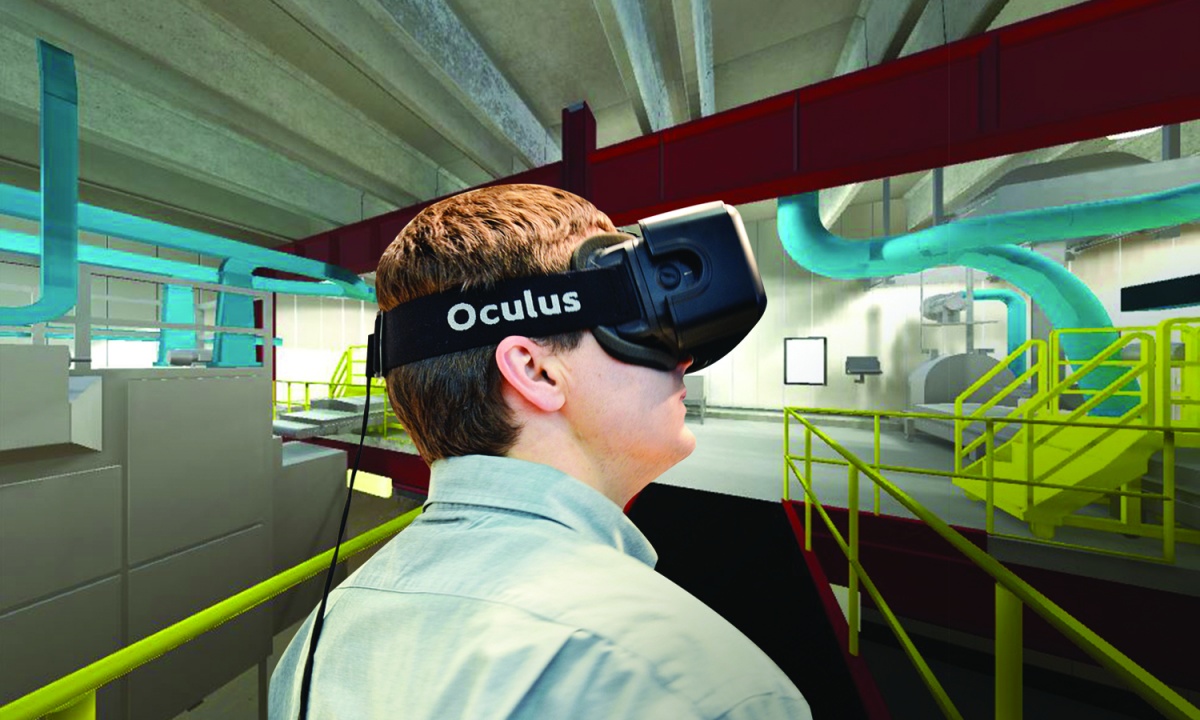4 Benefits of Virtual Reality to Food and Beverage Processing
It’s no secret that Virtual Reality (VR) is making a big dent in nearly every industry. From its role in auto manufacturing to retail and education, many believe that we are actually on the cusp of a VR revolution that’s transforming the human experience. But, how is it impacting the food and beverage industry, and specifically, food and beverage processing facilities?

As today’s food and beverage processing plants become more state-of-the-art, VR is playing an increasingly vital role in ensuring a successful design-build process. In the past, engineers and architects couldn’t simply put on a pair of goggles and tour a facility before construction workers broke ground. They couldn’t predict and circumvent design and engineering challenges before they occur. In fact, much of the design-build process was left to trial and error.
Today, as VR gains momentum in the design-build arena, food processors are quickly taking note of its positive outcomes as they plan for future facilities. Let’s take a look 4 ways VR is creating a smoother design-build process for food and beverage processors:
1) VR involves key stakeholders at very early stages
VR draws key stakeholders’ involvement very early in the design-build process. For example, by allowing plant managers, maintenance technicians and engineers to complete a virtual walk-thru, potential design issues can be brought to surface that may not have been noticed before. Also, by completing a virtual walk-thru before construction ever begins, they are able to bring their varied and diverse expertise to the table at the beginning of a project, spurring more positive outcomes in the design-build process.
2) VR allows for a fully-immersed experience for integrating process equipment in a facility
By creating a VR walk-thru of the proposed facility in the very early stages, manufacturers can engage with equipment suppliers and vendors, which allows them to better plan how operations will be conducted in the facility.
3) VR ensures food safety at the highest levels
Most would agree that a food processor’s greatest concerns are food quality and safety. VR enables processors to prepare for food audits well in advance of the first one ever occurring, thus ensuring the highest level of food safety.
4) VR connects industry experts with engineering principles
The amount of process and mechanical engineering that goes into designing a world-class facility is indescribable—and most likely entirely foreign to individuals outside of the field. By enabling the manufacturer to experience engineering functions first-hand in the design-process, VR prompts a conversation between the manufacturer and engineer that previously didn’t exist.

Join Gray Construction at the nation’s largest trade show event dedicated exclusively to the food and beverage industry – PROCESS EXPO 2015, Sept. 15-18 in Chicago, Ill. With over 1,000 exhibitors, this global food equipment and technology show is the place to be.
Gray invites you to experience VR first hand at PROCESS EXPO 2015, as we will allow you to tour your next food processing facility using Oculus VR Goggles.
- Category:
- Industry
- Food and Beverage
Some opinions expressed in this article may be those of a contributing author and not necessarily Gray.
Related News & Insights
Food and Beverage, Construction
Food Processing on the Rise, Thanks to Technology & Innovation
Industry
Food and Beverage
Where Technology & Organic Food Processing Intersect
Industry
October 24, 2013Food and Beverage
What's Driving the Growth of the Protein Segment?
Industry, Opinion
October 31, 2025